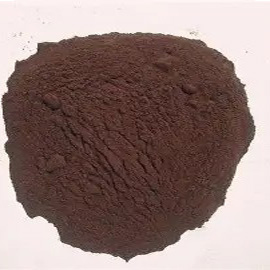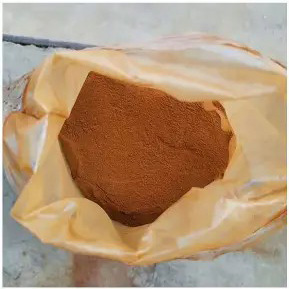Flotation depressants are chemicals used to selectively inhibit gangue minerals during ore beneficiation by modifying surface hydrophilicity or blocking collector adsorption. For instance, humic acid-based depressants (e.g., black powder with ≥55% humic acid content) are applied in iron ore reverse flotation to suppress iron-bearing minerals via pH adjustment and flocculation, enhancing concentrate grade. Modified starch depressants (e.g., sulfonated/carboxylated starch blends) selectively adsorb onto calcium-magnesium gangue through carboxyl and sulfonate groups, improving rare metal (e.g., tungsten, molybdenum) recovery. Small organic molecules (e.g., oxalic acid, citric acid) chelate silicate minerals, aiding rare earth and cassiterite separation. Eco-friendly alternatives like Flotilla 701 replace toxic sodium sulfide in copper-molybdenum separation, effectively depressing chalcopyrite while reducing hazardous chemical usage.
The beneficiation inhibitor is a flotation adjusting agent that inhibits the upward movement of target minerals or gangue minerals by altering the surface properties of the minerals. Based on its composition, it can be classified into organic inhibitors (such as lignosulfonate, tannic acid) and inorganic inhibitors (such as sodium silicate, sodium hexametaphosphate). It achieves selective inhibition by forming a hydrophilic film or altering the electrical properties of the minerals. In phosphorite flotation, sodium silicate inhibits gangue minerals such as quartz, and sodium hexametaphosphate can eliminate the interference of calcium and magnesium ions [1]. In 2023, a new type of composite inhibitor was developed by combining components such as aluminum sulfate and kraft gum, which increased the recovery rate of molybdenite by 2-4% [2].
Category: Flotation adjusting agent
Main function: Inhibiting the upward movement of minerals
Common types: Organic/inorganic inhibitors
Application field: Mineral flotation separation
Key component: Carboxymethyl cellulose
Preparation method: Solution co-solvent method
Mineral processing inhibitor
Flotation depressants are chemicals used to selectively inhibit gangue minerals during ore beneficiation by modifying surface hydrophilicity or blocking collector adsorption. For instance, humic acid-based depressants (e.g., black powder with ≥55% humic acid content) are applied in iron ore reverse flotation to suppress iron-bearing minerals via pH adjustment and
Products Description
Previous:
reverse flotation depressant
Next:
Oil drilling AIDS



_20250629094156A372.jpg)
